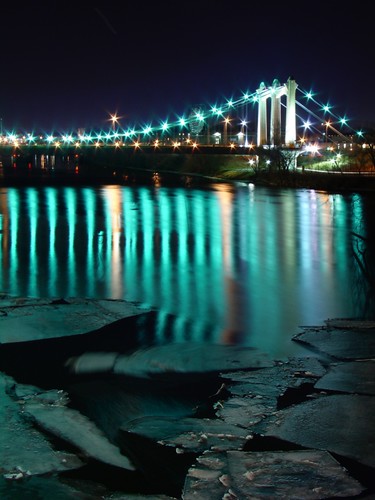
I guess I'm just a glutton for democratic politics. For the second day in a row, I attended a public meeting for the discussion of (what else?) the I-35W bridge reconstruction process. Hosted by MPR (yay!), paneled by Rybak, a state senator, an engineer, and a half-dozen policy wonks, attended by seventy or so concerned citizens, it was a great open forum to discuss the state of public infrastructure, funding sources, good (or bad) governance, and public faith in the government's ability to maintain said infrastructure.
The debate revealed an essential problem in the public discussion of infrastructure. On the one hand, discussions of infrastructure are necessarily scientific and dominated by engineers: what kinds of roads can be built at all? what kind of volume can they handle? how long will it take to build a certain bridge according to certain specifications?
But as soon as the discussion turns to funding, the discussion becomes necessarily political. Despite one participant's observation that the state once experimented with requiring a cost-benefit analysis for all expenditures, the fact remains that the process by which a budget is formed is a fundamentally political, not scientific, endeavor. In the best of all worlds, we would have limitless funds to support all the wonderful things we want government to do. But the pie is only so large, and unless we find new revenue sources (er, raise taxes) additional funding for project A must come at the cost of other projects.
What is infrastructure worth to us as citizens? One economist in the audience cited statistics that investment in infrastructure pays back tenfold. Successful economies, he said, are built on strong infrastructure, including roads, sewers, telecom, and human capital.
The bridge collapse goes beyond any normal, understandable kind of governmental failure. When pavement deteriorates and our car suspensions wear out faster, we complain that government is not properly investing in maintaining the roads. When a bridge falls out into the Mississippi, killing a dozen or so people and forcing 140,000 cars to find alternate routes across the river, our reaction is a bit more intense: we are stunned by our government's failure. The initial question at tonight's meeting, as put by our moderator, was this: "What do people expect of government when it comes to our roads?" Perhaps the best answer came at the end, when one gentleman said this:
"People expect not to have to worry about bridges collapsing into the river."








































